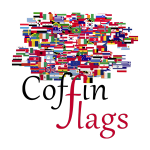Description
 Greece, officially the Hellenic Republic, also known as Hellas, is a country located in Southeast Europe. Its population is approximately 10.7 million as of 2018; Athens is the nation’s capital and largest city, followed by Thessaloniki. Situated on the southern tip of the Balkan Peninsula, Greece shares land borders with Albania to the northwest, North Macedonia and Bulgaria to the north, and Turkey to the northeast. The Aegean Sea lies to the east of the mainland, the Ionian Sea to the west, the Cretan Sea and the Mediterranean Sea to the south. Greece has the longest coastline on the Mediterranean Basin and the 11th longest coastline in the world at 13,676 km (8,498 mi) in length, featuring many islands, of which 227 are inhabited. Eighty per cent of Greece is mountainous, with Mount Olympus being the highest peak at 2,918 metres (9,573 ft). The country consists of nine traditional geographic regions: Macedonia, Central Greece, the Peloponnese, Thessaly, Epirus, the Aegean Islands (including the Dodecanese and Cyclades), Thrace, Crete, and the Ionian Islands. Greece is considered the cradle of Western civilisation, being the birthplace of democracy, Western philosophy, Western literature, historiography, political science, major scientific and mathematical principles, Western drama and the Olympic Games.
Greece, officially the Hellenic Republic, also known as Hellas, is a country located in Southeast Europe. Its population is approximately 10.7 million as of 2018; Athens is the nation’s capital and largest city, followed by Thessaloniki. Situated on the southern tip of the Balkan Peninsula, Greece shares land borders with Albania to the northwest, North Macedonia and Bulgaria to the north, and Turkey to the northeast. The Aegean Sea lies to the east of the mainland, the Ionian Sea to the west, the Cretan Sea and the Mediterranean Sea to the south. Greece has the longest coastline on the Mediterranean Basin and the 11th longest coastline in the world at 13,676 km (8,498 mi) in length, featuring many islands, of which 227 are inhabited. Eighty per cent of Greece is mountainous, with Mount Olympus being the highest peak at 2,918 metres (9,573 ft). The country consists of nine traditional geographic regions: Macedonia, Central Greece, the Peloponnese, Thessaly, Epirus, the Aegean Islands (including the Dodecanese and Cyclades), Thrace, Crete, and the Ionian Islands. Greece is considered the cradle of Western civilisation, being the birthplace of democracy, Western philosophy, Western literature, historiography, political science, major scientific and mathematical principles, Western drama and the Olympic Games.
The national flag of Greece, popularly referred to as the “blue and white” or the “sky blue and white”, is officially recognised by Greece as one of its national symbols and has nine equal horizontal stripes of blue alternating with white. There is a blue canton in the upper hoist-side corner bearing a white cross; the cross symbolises Eastern Orthodox Christianity, the established religion of the Greek people of Greece and Cyprus. The blazon of the flag is Azure, four bars Argent; on a canton of the field a Greek cross throughout of the second. The shade of blue used in the flag has varied throughout its history, from light blue to dark blue, the latter being increasingly used since the late 1960s. It was officially adopted by the First National Assembly at Epidaurus on 13 January 1822. According to popular tradition, the nine stripes represent the nine syllables of the phrase “Ελευθερία ή Θάνατος” (“Freedom or Death”), the five blue stripes for the syllables “Ελευθερία” and the four white stripes “ή Θάνατος”. The nine stripes are also said to represent the letters of the word “freedom” (Greek: ελευθερία). There is also a different theory, that the nine stripes symbolise the nine Muses, the goddesses of art and civilisation (nine has traditionally been one of the numbers of reference for the Greeks). White and blue have also been interpreted as symbolising the colours of the famed Greek sky and sea.








Reviews
There are no reviews yet.